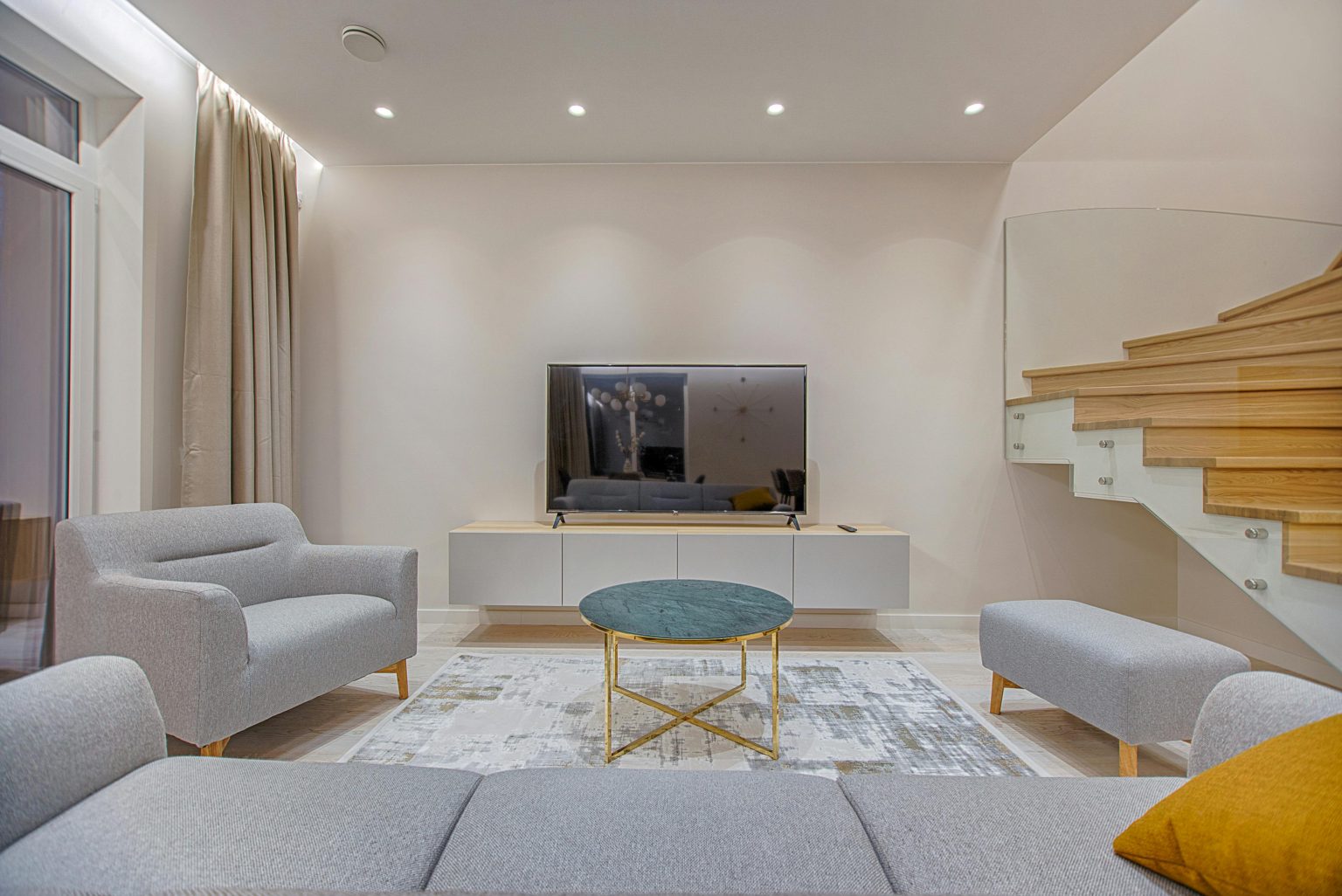Nothing ruins a sleek entertainment setup quite like a tangle of wires snaking down your wall. You’ve invested in that gorgeous 65-inch telly, mounted it perfectly, and then… there they are. Black cables creating visual chaos where you wanted zen-like minimalism.
I’ve been battling cable clutter for years, and let me tell you — it’s not just about aesthetics. Those exposed wires collect dust, pose tripping hazards, and frankly make your living room look unfinished. But here’s the thing: hiding them doesn’t have to be complicated or expensive.
There are countless solutions out there, from quick fixes that take minutes to install to more permanent approaches that require a bit of planning. Some work brilliantly, others… well, let’s just say I’ve learned from experience which ones to avoid!
Cable Management Strips and Covers
Let’s start with the most straightforward approach: cable covers. These adhesive strips run along your wall, creating a neat channel for your wires. I’ll be honest — they’re not invisible, but they’re infinitely better than exposed cables.
The key is choosing the right colour. White covers on white walls practically disappear, whilst black ones work well on darker surfaces. Some manufacturers even offer paintable versions, which is genius if you ask me. You can literally make them match your exact wall colour.
Installation is refreshingly simple. Clean the wall, peel off the backing, and stick them down. Most covers come in sections that connect together, so you can customize the length. The cables slot inside, and you’re done. Takes about 15 minutes from start to finish.
One word of caution though: cheap covers tend to fall off after a few months. Spend a bit extra for quality adhesive — it’s worth it in the long run.
Behind-the-Wall Cable Management
Now we’re talking serious solutions. Running cables through the wall creates that truly seamless look you see in showrooms. It’s like magic — your TV appears to float on the wall with no visible connection to the outside world.
The basic concept involves cutting two holes: one behind your TV and another near floor level where your components sit. You then fish the cables through the wall cavity. Sounds simple enough, right?
Well, it can be. But there are definitely things that can go wrong. You need to check for electrical wires, plumbing, and structural elements first. I learned this the hard way when I nearly hit a water pipe! Also, some walls have fire blocks — horizontal pieces of wood that prevent easy cable routing.
For power cables specifically, you’ll need proper in-wall rated versions. Standard extension cords aren’t suitable (and violate building codes). HDMI cables, ethernet, and other low-voltage wires are generally fine as-is.
Professional Installation Benefits
While there are many DIY kits available, for a truly seamless finish, a professional installation is often the best route. When I had my TV mounted, the technicians handled all the wiring, and the result was flawless — no clutter at all. It’s a small detail that makes a huge difference.
Professional installers bring specialized tools and expertise that most of us simply don’t have. They can handle tricky situations like brick walls, complex routing around obstacles, and ensuring everything meets safety standards. Plus, if something goes wrong, it’s their problem to fix!
The cost varies, but considering the time saved and guaranteed results, it often makes financial sense. Especially if you’re mounting multiple TVs or dealing with challenging wall construction.
They’ll also advise on cable quality. Not all HDMI cables are created equal, and running cheap ones through walls can lead to signal issues down the line. A good installer will recommend appropriate grades for your specific setup.
Creative Concealment Solutions
Sometimes you need to think outside the box. Decorative elements can transform those unsightly cables into design features (or at least make them blend in better).
Cord covers designed to look like branches or vines add a natural element whilst hiding the wires. They’re particularly effective in rooms with botanical themes. I’ve seen setups where the “vine” actually enhances the overall aesthetic.
Another clever approach: using existing furniture and decor. Bookshelves, picture frames, and wall art can strategically conceal cable runs. It requires careful planning, but the results can be stunning.
Fabric sleeves offer yet another option. These flexible tubes gather multiple cables together and can be painted or covered to match your decor. They work especially well when you have several cables running the same route.
Raceway Systems for Multiple Cables
When you’re dealing with surround sound systems, gaming consoles, streaming devices, and all the accompanying cables, simple strips won’t cut it. That’s where raceway systems shine.
These are essentially larger channels that can accomodate multiple cables simultaneously. They come in various sizes and configurations, including corner pieces and junction boxes for complex routing.
The installation process is similar to basic cable covers but requires more planning. You’ll need to map out your entire cable run first, identifying where different cables branch off to various components.
Quality raceways include features like removable covers for easy access and internal dividers to separate different cable types. This prevents interference between power and signal cables — something that can cause annoying buzzing or picture quality issues.
Floor and Furniture Integration
Don’t overlook opportunities to hide cables at floor level. Cable management solutions that run along baseboards or under carpets can be incredibly effective.
Flat cables designed for under-carpet installation work brilliantly in many situations. They’re thin enough to be virtually undetectable underfoot but still carry full signal strength. Perfect for running cables across rooms without wall modifications.
Furniture with built-in cable management is becoming increasingly common. Entertainment centres with rear cutouts and internal routing make cable management almost effortless. Even some sofas now include USB ports and cable channels!
For existing furniture, adhesive cable clips can create routing paths along the back edges. They keep cables organized and out of sight whilst maintaining easy access for changes or maintenance.
Wireless Alternatives and Smart Planning
Sometimes the best way to hide cables is to eliminate them entirely. Wireless HDMI transmitters can send signals from your components to your TV without any physical connection. The technology has come a long way — modern versions support 4K and have minimal lag.
There are limitations though. Wireless systems can be affected by interference from other devices, and they do require power at both ends. So whilst you eliminate the HDMI cable, you still need to address power routing.
Smart TVs with built-in streaming capabilities reduce cable requirements significantly. If most of your content comes from Netflix, iPlayer, etc., you might only need power and perhaps an ethernet connection for the most reliable internet access.
Planning your setup before mounting anything saves enormous headaches later. Consider what devices you’ll connect, where they’ll sit, and how the cables will route. Sometimes simply repositioning components can dramatically simplify cable management.
Final Thoughts
Hiding TV cables isn’t rocket science, but it does require some thought and planning. The approach you choose depends on your specific situation — wall construction, rental restrictions, technical comfort level, and of course budget.
Start with the simplest solution that meets your needs. Cable covers might not be perfect, but they’re quick, affordable, and reversible. You can always upgrade to more sophisticated approaches later.
Remember that cable management isn’t just about aesthetics. Properly routed cables last longer, perform better, and create safer living spaces. Plus, there’s something deeply satisfying about a clean, organized entertainment setup. It just feels more premium, doesn’t it?



